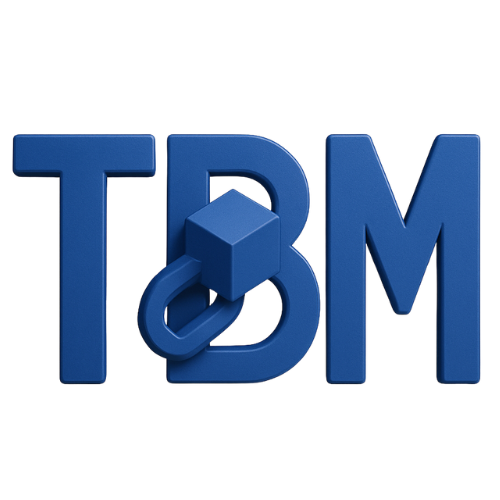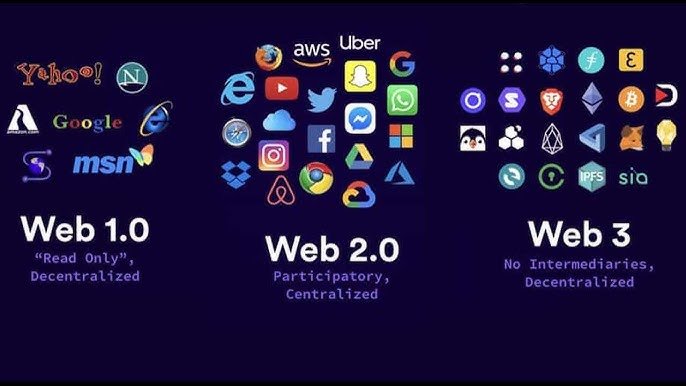What is Web3? Discover how the decentralized internet is changing ownership, identity, and innovation—plus how you can be part of it.
Introduction
What is Web3? It’s a question that’s popping up more and more as we see the internet transition from centralized platforms to decentralized, user-driven experiences. In this guide, we’ll dive into what Web3 truly means, how it operates, and how you can get involved in shaping the future of our digital landscape.
In this beginner’s guide, we’ll cover:
1. What is Web3 all about?
2. How it operates
3. Real-world comparisons and case studies
4. Smart examples of how Web3 domains are being used
5. Why snagging a domain like .wallet or. Dao could give you an edge
1. What Is Web3?
Web3 is the next step in the evolution of the internet:
·
Web1 (pre‑2005): Read-only, static pages
·
Web2 (2005–present): Interactive, but centralized (think Facebook, Google, Airbnb)
·
Web3 (on the horizon): Decentralized, user-owned, and transparent
Core Principles of Web3
Decentralization: In blockchain networks, there are no central servers, which means there’s no single point of failure.
Ownership: You have full control over your data, digital identity, and assets, whether they’re collectables or tokens.
Trustlessness: Smart contracts take care of agreements automatically, so you don’t need a middleman.
Interoperability: Various platforms and chains can seamlessly collaborate.
2. How Web3 Works – A Simple Analogy
Think of Web3 like a group project in school:
In Web2, one student does all the writing, controls the tools, and grades themselves.
In Web3, every student pitches in, the tool keeps a public record of all changes, and smart contracts automatically distribute grades when everyone meets the benchmarks.
This leads to transparency, fairness, and shared ownership.
3. Real-World Examples & Case Studies
A. Decentralized Finance (DeFi)
With Web3, you can lend, borrow, or earn interest through platforms like AAVE or Compound—no need for a traditional bank or credit checks. It’s similar to peer-to-peer lending, but with open ledgers and programmable rules.
B. NFTs & Digital Ownership
From digital art to virtual real estate, NFTs verify authenticity. For instance, the creators of Bored Ape Yacht Club built a community around their NFT collection, giving members exclusive access and increasing its value.
C. Decentralized Autonomous Organizations (DAOs)
DAOs are organizations run by the community. Picture a community garden where members vote on what to plant, how to maintain it, and how to share the profits. DAOs bring that
Same democratic approach to the online world. Domain names ending in .dao clearly indicate this purpose.
4. Smart Use of Web3 Domains
Owning Web3 domains isn’t just a trendy move—it’s a smart strategy.
A. Branding and Trust
When you have a domain like yourname. wallet or myfinance.blockchain, it shows you know your way around Web3.
Imagine a domain like bookhotel. blockchain, which could power a decentralized booking system, more paying Expedia fees, and all peer reviews stored securely on the blockchain.
B. Decentralized Tools & Services
Take lending. dao: a lending platform run by a DAO where users get to vote on the terms.
Or consider deciding. vote: a handy tool that lets any community run transparent polls with results recorded on-chain.
These domain names do more than just look impressive—they set user expectations and create real pathways for decentralized solutions.
5. Why Early Domain Ownership Matters
Think of it like snagging real estate before a neighbourhood takes off. Securing domains like .wallet or .blockchain can give you a leg up in the future, whether you decide to build, resell, or lease them. Picture owning eventplanner.wallet back in 2022; by 2025, it could be the go-to for crypto-payment event bookings. These domains are more than just web addresses—they’re your foothold in the Web3 landscape.
6. How You Can Stay Ahead in Web3
1. Keep tabs on key projects: Stay updated on Ethereum, Solana, Polkadot, and the latest AI + Web3 startups.
2. Join communities: Dive into Discord and Twitter/X channels that focus on DAOs, DeFi, and domains.
3. Learn some tech basics: Get comfortable with wallets, minting NFTs, and deploying smart contracts—nothing too overwhelming.
4. Experiment with domains: Try launching a project with .wallet or .dao—even if it’s just a simple landing page.
5. Start small, think big: Kick off with a straightforward tool—like a tipping wallet or an escrow contract—and let your ideas grow from there.
FAQs
Q1: What’s the difference between Web2 and Web3?
A: Web2 relies on centralized platforms, while Web3 is all about decentralized protocols. This shift gives users more ownership and transparency, cutting out the middlemen.
Q2: Do I need to understand blockchain code to participate?
A: Not at all! You can purchase domains, create wallets, and even develop basic apps using no-code tools. The smart contracts and infrastructure usually work behind the scenes.
Q3: Are Web3 domains secure and reliable?
A: Absolutely! Domains like .eth, .wallet, .dao, or .blockchain run on robust blockchain networks. Their security comes from decentralization and cryptographic identity systems.
Q4: How expensive are Web3 domains?
A: The prices vary—common names might set you back tens to hundreds of dollars a year, while premium or ultra-short names can be pricier. It’s pretty similar to traditional domain investing.
Q5: Can I use a Web3 domain for a regular website?
A: Definitely! Many of these domains can be accessed in browsers with plugins (like MetaMask) and can also be set up with standard DNS redirects, making them user-friendly for everyone.
Q6: What can I build with a domain like .wallet or .blockchain?
A: You can create a wallet dashboard, a payment portal, a lending tool, or even a simple landing page to showcase your brand—there’s a lot of flexibility. These domains lend instant credibility.
Conclusion
Web3 isn’t just a tech trend; it represents a significant shift towards ownership, transparency, and decentralized innovation. By smartly utilizing domain names like .wallet, .blockchain, or .dao, you position yourself as a trailblazer, gaining real branding and technical advantages. Exploring these domains early on could unlock exciting opportunities in the future.
#https://twitter.com/hashtag/web3, #https://twitter.com/hashtag/blockchain, #https://twitter.com/hashtag/web3domains, #https://twitter.com/hashtag/dao, #https://twitter.com/hashtag/decentralized, #https://twitter.com/hashtag/what_is_web3, #https://twitter.com/hashtag/web3guide

